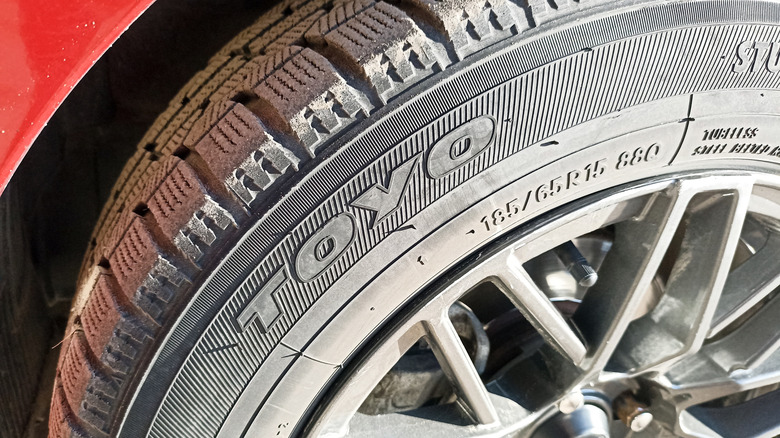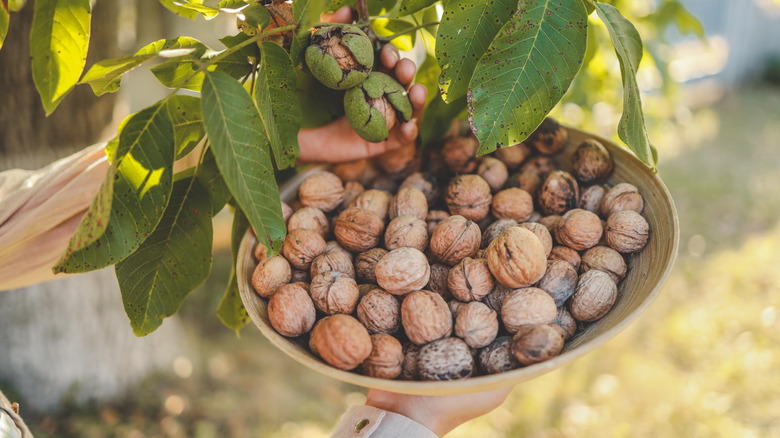Why Do Toyo Tires Have Walnut Shells In Them?
Drivers in temperate climates might be able to get away with fitting all-season tires, but for snowier parts of the country, buying a good set of winter tires is essential to keep yourself safe on the road over the colder months. There are a few key differences between winter tires and all-season tires: Winter tires often feature different tread patterns for superior grip in icy conditions, alongside sporting softer tread. Some winter tires also feature unique rubber compounds to aid grip, with Toyo Tires' winter tire line blending walnut shells into its tire compound for this reason.
According to the brand, walnut shells make a good addition to winter tires as they're naturally extremely hard, allowing them to scratch against icy, slippery road surfaces to generate high levels of friction. Toyo uses walnut shells leftover from food production and bakes them before adding them to the compound used in its Observe tire line.
The baked shell pieces offer additional grip on icy roads without damaging the road surface in the same way that studded tires can. Toyo claims that its decision to use walnut shells was based on comprehensively testing a variety of materials to find the most effective addition to its tire compound, but the idea of using walnut shells in tires is not a new one.
Bobby Unser used walnut shell tires in the 1950s
Back in the late 1950s, decorated racing driver Bobby Unser came up with the idea of using walnut shells to create grippier tires for the Pikes Peak Hill Climb, and contracted Goodyear to make the experimental tires. Unser credited his invention jointly to himself and his father, noting that they had tried out a variety of other materials, including crushed batteries, before settling on walnut shells as the best tire addition.
Unser's innovation was an effective one, and he went on to win Pikes Peak a total of 13 times. Over the decades, the iconic hill climb has established itself as a hotbed of automotive innovation, and has hosted a wide variety of weird and wonderful vehicles. Ford even sent a 2,000 horsepower electric cargo van up the course in 2023.
While it's safe to say that 2,000 horsepower vans aren't particularly useful in the real world, the walnut shell tire compound is a great example of how some racing technology can end up benefitting everyday drivers many decades after it was first conceived. It's far from the only example — in fact, there are countless ways that racing technology has made your car better, from borrowing racing-derived materials to improving the design of its suspension.

